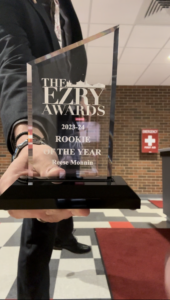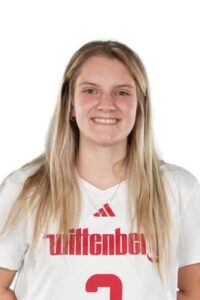 The Ann Miller Gallery, located on the first floor of Koch Hall, will be hosting artist Terri Kern’s ceramic sculpture collection from Sept. 28 to Nov. 6 this year. The 38-piece show displays a plethora of possibilities with both clay and paint. From “Truce,” a clay piece with two birds poised on opposite ends of two seesawed ladders, to “Double Courage,” a clay piece carved and painted with two dragons turning into trees, experiencing Kern’s work is a journey.
The Ann Miller Gallery, located on the first floor of Koch Hall, will be hosting artist Terri Kern’s ceramic sculpture collection from Sept. 28 to Nov. 6 this year. The 38-piece show displays a plethora of possibilities with both clay and paint. From “Truce,” a clay piece with two birds poised on opposite ends of two seesawed ladders, to “Double Courage,” a clay piece carved and painted with two dragons turning into trees, experiencing Kern’s work is a journey.
Largely autobiographical, her work is laced with narrative images for the spectator to engage.
“My work has always documented my personal history,” Kern wrote in her artist statement. “Each piece functions as a visual marker that commemorates a single moment, event or memory.”
To assist onlookers in understanding her story, Kern includes specific meanings to certain narrative images (i.e. birds and dogs signify self and relationships; ladders: doubt and the struggle for growth; snakes: forgiveness). Undoubtedly, a theme in Kern’s work is change; multiple pieces showcase movement and time. The relationship between forgiveness and creativity is also reflected in Kern’s work.
Kern earned her Master of Fine Arts Degree at Ohio University in 1990, and opened her own ceramics studio in 1991. She has won more than 25 awards for excellence in ceramics, and has led a workshop on narrative symbolism in Cincinnati, a topic that is especially important in her work.
“The blending of color is done by brush work alone – no airbrushing is used,” Kern wrote on her website. “To achieve the sense of depth and lush color, the underglaze (which is semi-transparent) is applied onto the surface of the clay in many separate layers. Because of the transparent nature of the underglaze, each layer picks up the color from the layer underneath it, which results in very rich colors.”
These details are especially important in the context of the gallery as a learning facility.
“A show can be complimentary or a necessary extension of what we do in the classroom,” Ed Charney, professor of art, said.
The space is an opportunity for faculty to invite artists who are relevant to what they are teaching.
However, the Ann Miller Gallery is also for the rest of the Wittenberg community.
“Seeing a show helps people realize that art is behind the scenes — everything has been designed by humans,” Charney said.
A show reminds us that “there is a community of people who devote their lives to art and spend hours making objects,” and that “there are these options in life,” he said.
Likewise, Kern’s pieces explore themes especially relatable to the college experience — growth and doubt, courage and possibilities — regardless of discipline.
“Art can be multi-layered and multi-functional,” Charney said in light of Kern. “I always like to read the titles.”
Indeed the titles, along with the images and their specific meanings do seem to tell a story.
“Specifically this work records my struggle to navigate crossroads where my creative life, my family life and my community life intersect,” Kern wrote.





